Hide Comments
Skip to content
Skip to sidebar
Skip to footer
If you’re tired of local Salt Lake City hikes and ready to mix things up outside of the city, consider Antelope Island.
Utah’s Great Salt Lake is vast and filled with small islands, but none as picturesque as Antelope Island State Park. It’s a perfect place to test out van camping and go exploring–you are out in nature, but with designated campgrounds, safe overnight parking, and basic amenities.
I’ve done day trips, tent camping and camper van stays at Antelope Island. I’ve heard Utah locals question if Antelope Island is worth visiting – but for someone who loves vibrant sunsets, photography and scenic views, it’s absolutely worth a visit.
Antelope Island is the largest island in the Great Salt Lake, about an hour’s drive northwest from Salt Lake City. The island is connected to the mainland by a singular paved road that stretches for nearly seven miles over the Great Salt Lake, called the causeway.
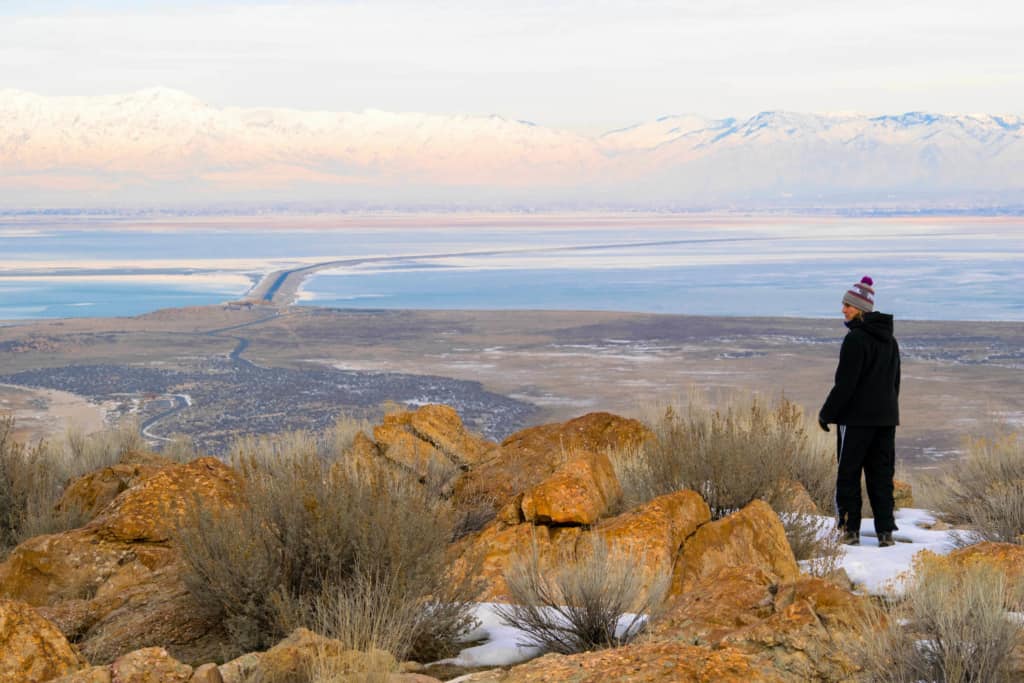
The island boasts absolutely epic sunsets, 36 miles of mountain biking and horseback riding trails, designated campgrounds, beaches, and a range of wildlife. It also has a fenced-off “backcountry” area where you can hike Frary Peak, the biggest mountain on the island.
Mountain Biking: You can bike Antelope Island really any time of year, with peak times in the Spring and Fall. There are over 20 miles of mountain biking trails that range in difficulty from beginner to expert. Some trails casually ride along the lakeshore while others climb steeply up scenic lookouts.
Horseback Riding: Pretty much all trails except Frary Peak and Dooly Knob are horseback riding friendly. With sandy trails easy on hooves, big parking lots for big trailers, and even corrals for overnight camping, Antelope Island is ideal for horseback riding adventures.
Hiking: Pretty much all the mountain biking and horseback riding trails are also suitable for hiking on. Take a casual stroll along the sandy beach or get your sweat on while climbing the strenuous Frary Peak! Dogs are welcome but must be on leash. There is also the 10-15 minute hike from a small parking lot to Buffalo Point, which provides beautiful views.
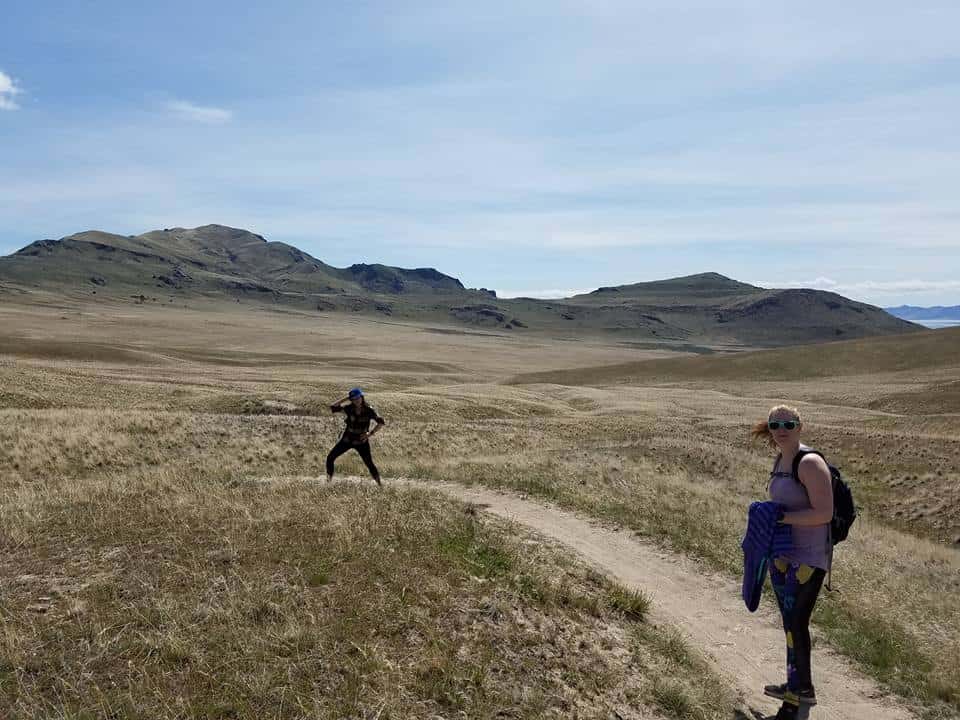
Picnicking & Camping: Well-maintained picnic tables and gazebos are sprinkled throughout the shoreline areas, usually with bathrooms close by. For camping, Antelope Island has over 90 camp spots that range from primitive, tent-only, group-size, or standard-partial hookup. This means that van lifers, RVers, tent campers or anything in between will have accommodations.
Bridger Bay, Ladyfinger, and White Rock Bay are the main campgrounds–I opted for Ladyfinger when I camped because it gave me amazing sunset views. But it was very, very windy. Campfires are only allowed in established fire pits at White Rock and Bridger Bay campgrounds. If you are ready to reserve, book a camp spot today!
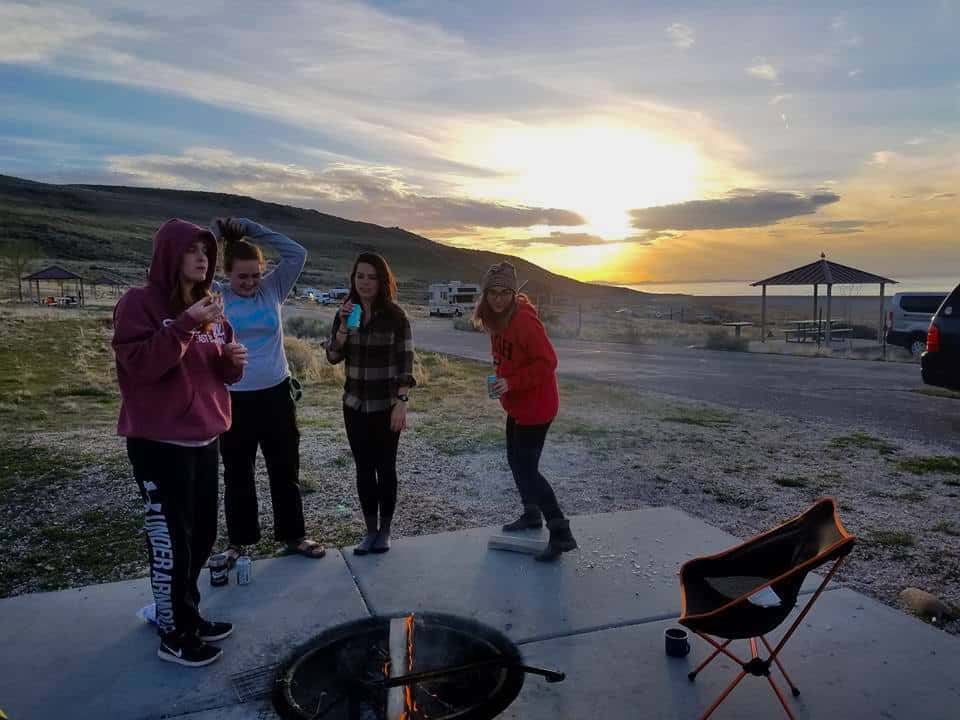
Boating & Swimming: Kayaking and sailing are very popular activities at Antelope Island in the summertime. The island even has a marina that provides full service to sailors and boaters. And despite the water’s occasional sulfur smells, people enjoy sunbathing on the beaches and swimming in the salty water. At 12% salinity (much saltier than the ocean), the water allows you to float right on it without a flotation device! There are freshwater showers at the bathrooms so you don’t need to take that salty water home with you.
Photography: If you’re a sunset chaser or an avid bird photographer, Antelope Island is the jackpot for these types of photography. The reflections of the mountains and sunset colors off the lake create a mirroring effect for mind-blowing sunrise or sunset shots. And with more bird species than any one person can count, the island is a perfect setup with tree-less views.
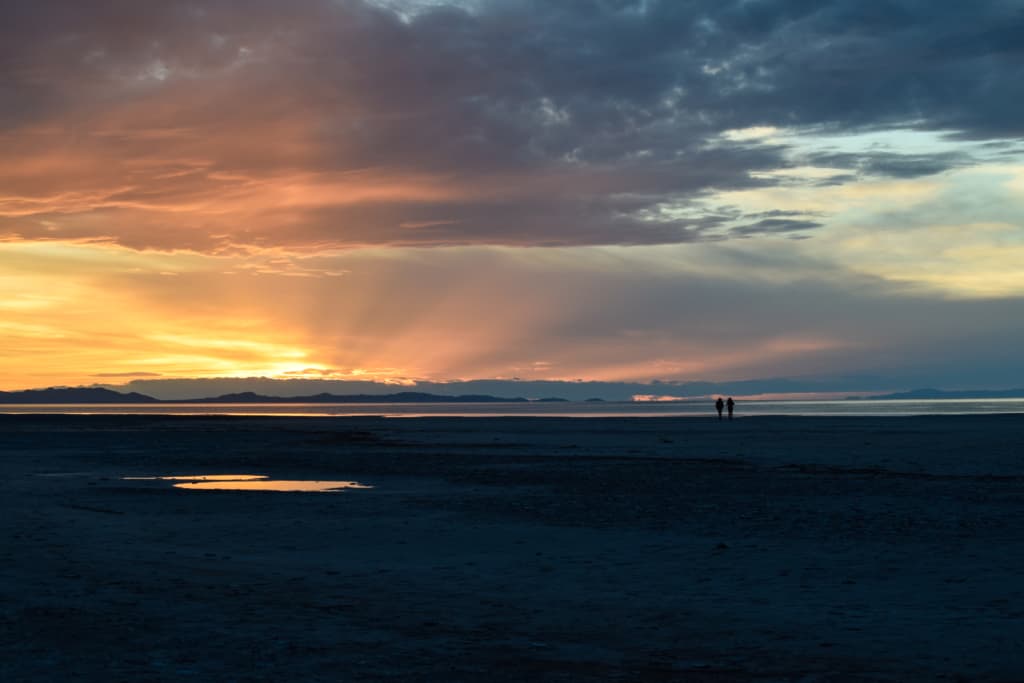
Nighttime photography: Let’s not forget one of the coolest types of photography – nighttime photography! Antelope Island was officially designated as an International Dark Sky Park in 2017 by the International Dark Sky Association, meaning it has world-class dark skies with minimal light pollution, providing an incredible opportunity to capture the stars, planets and Milky Way.
Frary Peak is the tallest point on Antelope Island, at 6,596 feet. It’s a strenuous day hike that will provide the most expansive views of the Great Salt Lake and the island.
– Mileage: 6.6 miles out & back
– Elevation gain: 2,100 ft
– Hiking time: 5-6 hours
– Multi-use: Hiking only
– Dogs are allowed on leash
– Fee: $15 park entrance fee
Make sure to check the weather forecast before climbing Frary Peak. Not only does it have no tree coverage, but it’s on an island in a lake, maximizing exposure to wind and the elements.
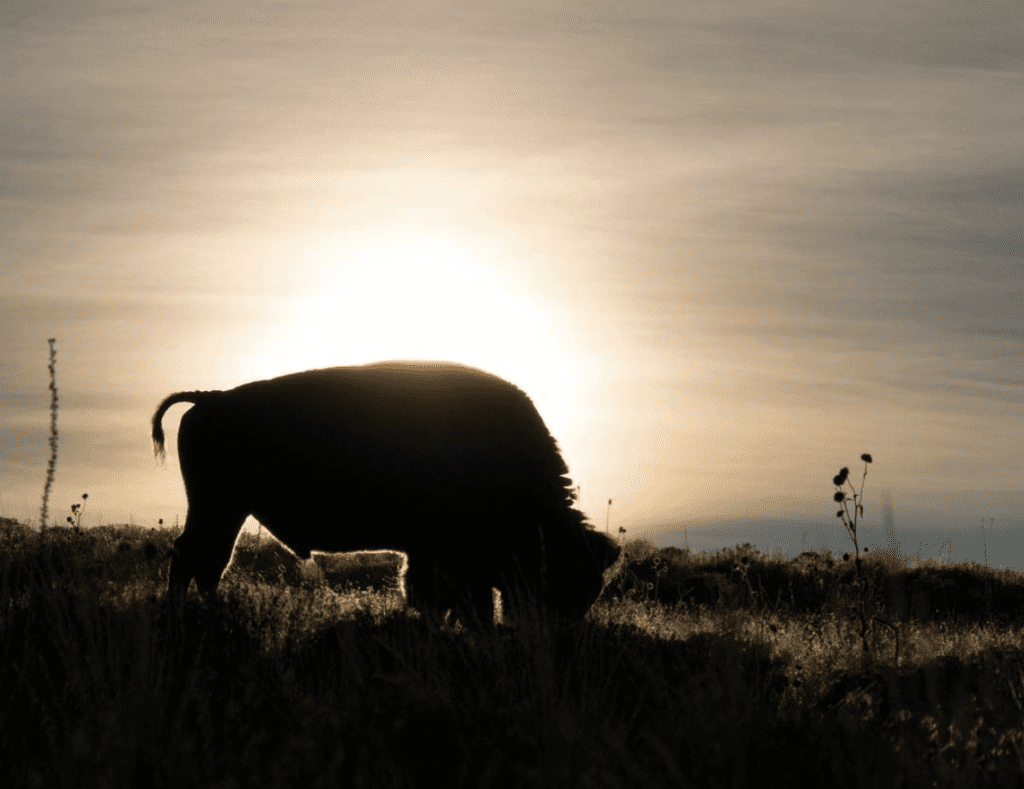
One of the most common animals you’ll see on Antelope Island is the American Bison. They are huge and there are approximately 900 of them roaming around everywhere! Which is funny, given it’s named Antelope Island. You may see antelopes, but they are a little more rare to see than coyotes, pronghorn, bighorn sheep, and elk. And thanks to the lake’s marshes, there are loads of different types of birds that migrate here.
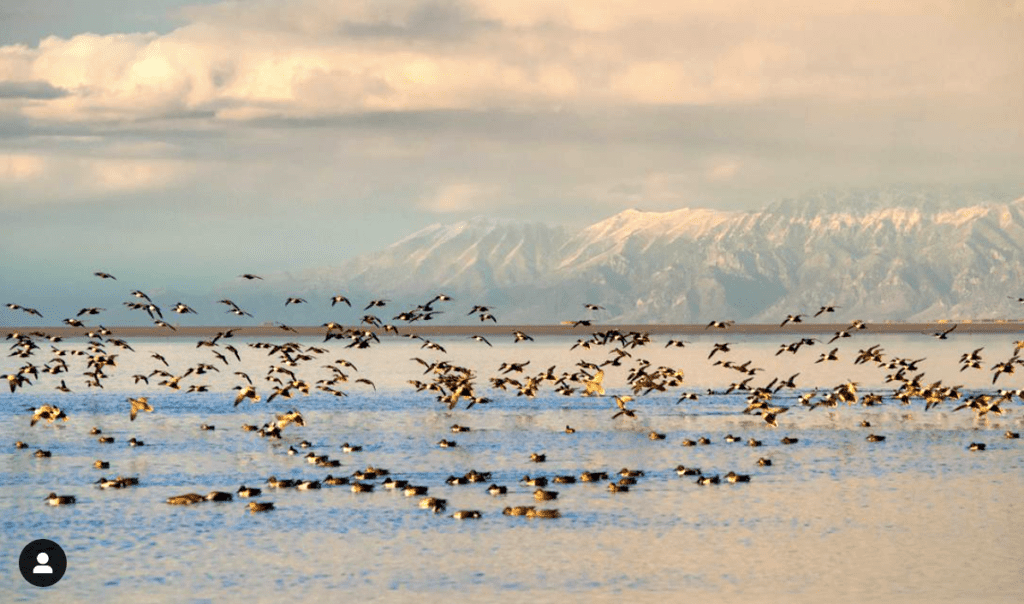
There are so many types of birds on the island that instead of listing them all, I’ll direct you to this PDF of all the birds! Popular ones include the chukar, gull, a variety of shorebirds, raven, black-billed magpie, several species of blackbirds, and so many more. Avid bird watchers can visit the federally managed Bear River Bird Refuge or the state’s Farmington Bay Waterfowl Management area, both located on the island.
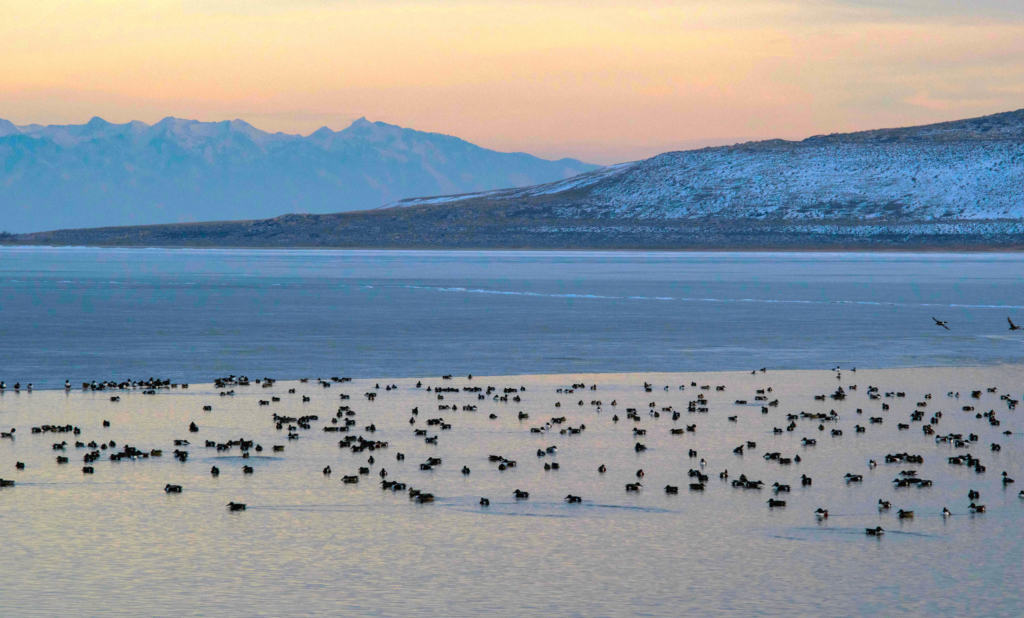
To get to Antelope Island, drive north on I-15 towards Syracuse and then get on U-127, where you will see signs for Antelope Island–follow those signs. You’ll know you are there when you hit the entrance booth at the beginning of the causeway.
A regular day pass for one vehicle costs $15 (with up to eight people per vehicle)–unless you are a senior citizen, then it’s only $10 per vehicle. The fee is only $5 for motorcycles and $3 for bicyclists and pedestrians.
If you are camping on the island, a camp spot will run you $30 for one vehicle without hookups, and $40 for spots with water and electric hookups. It’s $18 per additional car. Both camping fees also cover the park entrance fee.
You can opt for an Antelope Island Annual Pass for $65, which includes the Davis County Causeway fee.
Every rose has its thorn and Antelope Island is no exception! Thankfully, none are deal breakers, but you should take them into account before planning your trip:
Gnats: Biting gnats (or no-see-ums) run rampant on the island during spring (April-June) and insect repellent is useless on them. The island staff recommends fine mesh head netting.
Mosquitos: The marshy wetlands attract mosquitos from mid-spring to early fall. But unlike gnats, insect repellent is effective at keeping them away.
Rotten Egg Smell: I used to think the sulfur smell of the water was caused by the lake’s unique high salinity makeup. Turns out, it’s actually caused by the treated wastewater that is poured into Farmington Bay, which lies right at Antelope Island. Yum.
Wind: With just about zero trees on the island and extra exposure to the elements thanks to its position on a lake, it’s common to deal with high winds. I remember doing an overnight stay in my campervan, letting the wind rock my van back and forth all night. My friend thought she was going to be blown off of Frary Peak a few years back when climbing it on a windy day. You can monitor conditions through stateparks.gov.
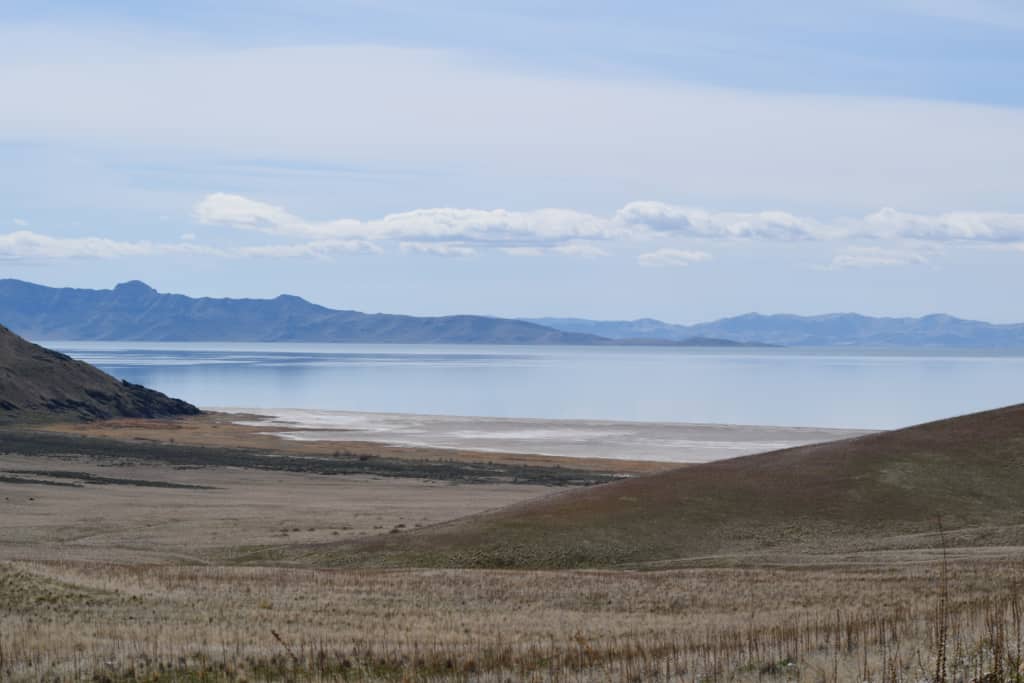
Antelope Island is a slice out of history. It rests in the Great Salt Lake, which is the only remaining water source of prehistoric Lake Bonneville, which used to cover 20,000 square miles over Utah, Nevada and Idaho about 20,000 years ago.
If you have a penchant for the outdoors, an appreciation for our state parks, and an insatiable curiosity about wildlife, star gazing or landscapes, Antelope Island is the place for you.
If you’re ready to take on some of the biggest hikes in Utah, check out Mt. Timpanogos and Mt. Nebo hiking guides!